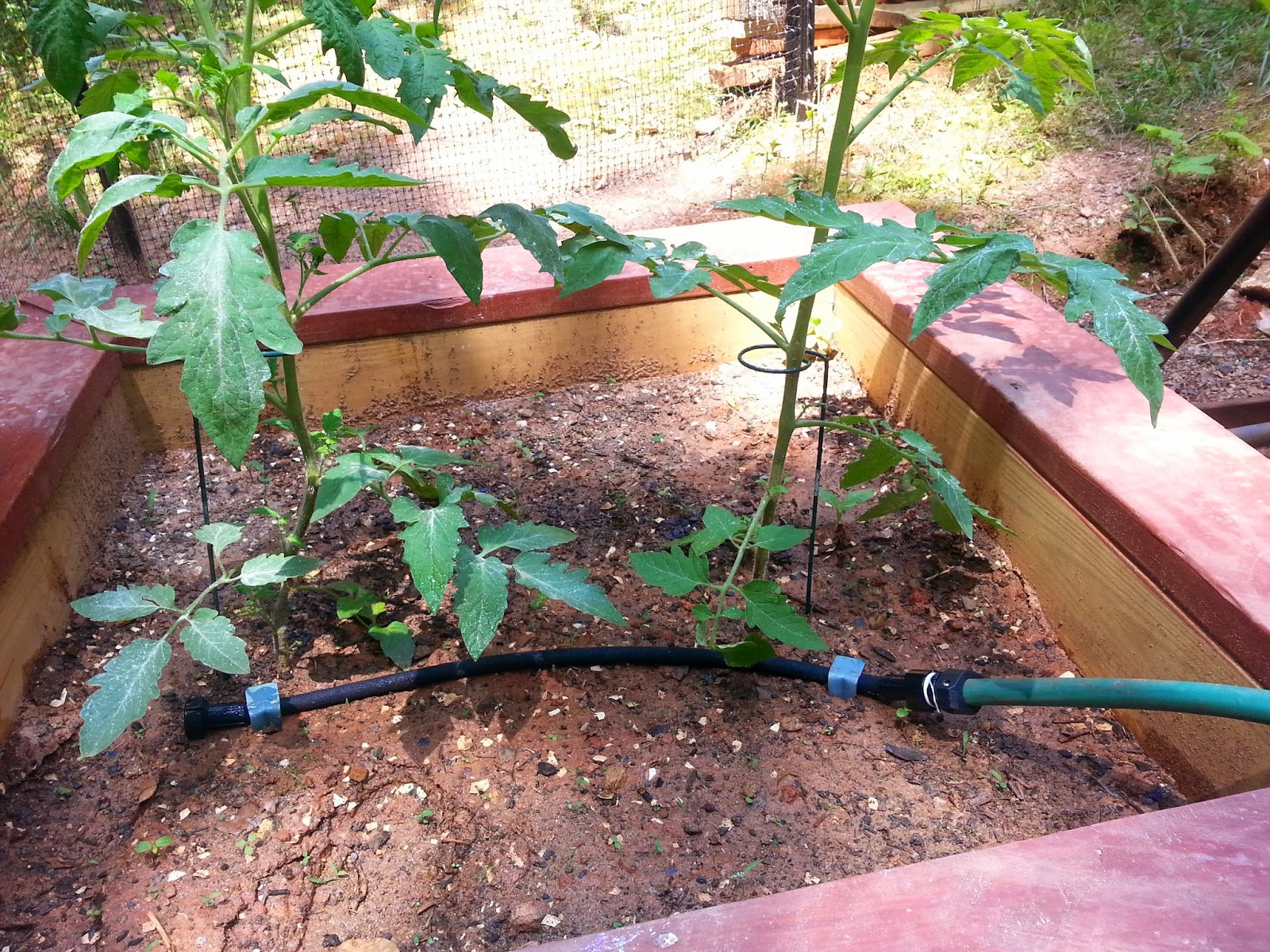Since my garden spaces are spread throughout the property and awkwardly shaped, I couldn't set up the sort of automatic sprinkler that you would see in front lawns. My husband and I opted for a soaker hose irrigation system set on timers.
The soaker hoses themselves were inexpensive. We got 100 feet for $20. The multi-zone timers were the most expensive at $30 each and then the little connectors needed were $4 each. We needed several of those because our garden boxes are unique shapes.
The setup is simple:
- Draw out your irrigation plan and take the proper measurements
- Cut garden hose
- Attach connector (there are males, females, and then T and L shaped options depending on what you're doing)
- Tighten clasp that unites connector and garden hose with a screwdriver
- Insert length of soaker hose needed to fit your garden space
- Tighten clasp that unites connector and soaker hose with a screwdriver
- Secure end caps where you want water flow to stop
- Repeat as needed
We put plumber's tape on the connectors to guard against leaks. We also used stakes to hold the hoses in place but in retrospect that isn't necessary. Having the hoses staked down makes it harder to weed the garden. The wind isn't going to blow the hose away either since it's set down into the raised beds. We could have saved about $25 without the metal stakes.
The Melnor's AquaTimer devices are user friendly and pretty self-explanatory. We have our L shaped and funky quadrangular bed set to water at 5am and 5pm for ten minutes. On the other side of the house, both beds are watered at the same times but the bed with the most sun exposure gets 10 minutes and the one with the least sun exposure gets only 5 minutes. With any more water than that, the shade makes the raised bed a comfy place for moss.
The rain delay is a little iffy on this brand. I haven't figured out how much rain is required to initiate the delay. Sometimes it sprinkles and the system still turns on. Other times we seem to get the same amount of rain and the system doesn't turn on. In any case, it doesn't turn off after a heavy, long rain so that's worthwhile.
My only complaint is that I wish I could just set the time I wanted the water to come on instead of having to set a "water every" time with predetermined intervals. Maybe a pricier model offers that flexibility. Doesn't matter. We've experienced crazy plant growth since installing the water system.
Before
6 weeks later
We got everything at Home Depot for just shy of $100. I wanted it to cost less of course and it probably could have if we ordered parts online. But it's still worth it. We can leave for vacation without having to pay someone to come water the garden. I don't have to stand outside and water the plants for 30+ minutes every day. That's pretty priceless!
Our water bill has also improved. We're saving 9.5% on water compared to this time last year. I would guess that the savings would be even more if this year was as dry as last year but since we're getting more rain, the rain delay kicks in on the timer and the system starts less often.








No comments:
Post a Comment